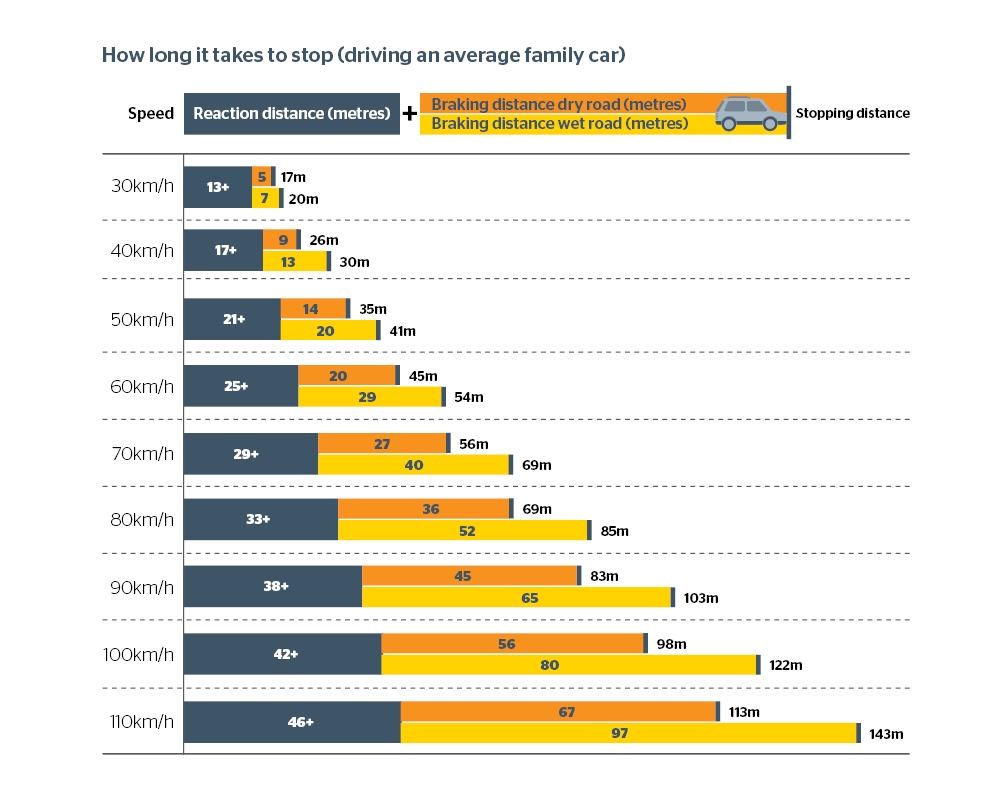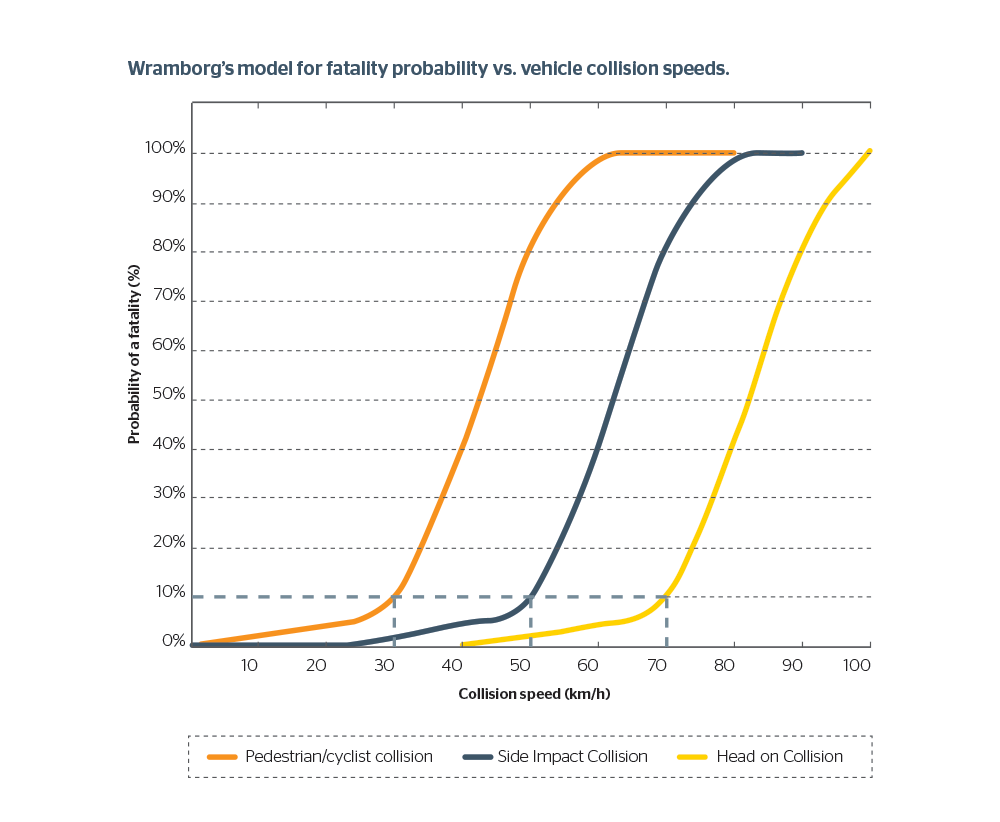Speed is a major contributor to deaths and serious injuries on WA roads, which is why speed management, including safe speed limits should be a priority of our road network.
Did you know...
Increasing your speed — even by just a few kilometres an hour — increases your braking distance and can significantly increase your risk of a crash, serious injury and death. For example, on a 10km journey in a 60km/h zone, you save just 46 seconds by increasing your speed to 65km/h but double your chance of being killed or seriously injured in a crash.
A 10 per cent decrease in speed has a small impact on journey times but can reduce death and serious injury crashes by up to 30 per cent in high-speed environments.
Speed affects how far you travel while reacting and braking
Even good drivers make mistakes or encounter unexpected hazards. With less time to react, driving at higher speeds increases both the likelihood and severity of a crash.

The impacts of speed on our fragile bodies
When a crash occurs, kinetic energy (the energy of motion) is transferred from one object to another. The greater the speed, the greater the kinetic energy. Our bodies are fragile and can only tolerate the force of a limited amount of energy (our biomechanical tolerance). In a crash the speed of colliding objects (e.g. cars, buses, bicycles and people) significantly influences whether those involved are killed or seriously injured.
Vulnerable road users, such as pedestrians, cyclists and motorcycle riders, have little protection, so their chances of survival rapidly decrease at speeds greater than 30km/h. In fact, a pedestrian is twice as likely to be killed by a car travelling at 50km/h than one travelling at 40km/h.
Motor vehicles provide a level of protection to their occupants in a crash as their frames absorb some of the kinetic energy released (vehicles with a 5-Star ANCAP safety rating / used car safety rating provide the greatest level of protection). For motor vehicle side-impact and head-on crashes, the chances of survival rapidly decrease at speeds greater than 50km/h and 70km/h respectively.
Lower speed limits dramatically reduce the likelihood of someone being killed or seriously injured in a crash. They can also support more liveable neighbourhoods, increased active travel and reduced fuel consumption and emissions. This is why speed limits across WA should be reviewed to better account for the forces our bodies can tolerate.
 RAC has partnered with the City of Busselton and Shire of Augusta Margaret River (with support from Main Roads WA) to deliver the Safer Speeds Trial in the South West. The trial aims to test a new approach to setting speed limits, focusing on harm minimisation and analysing roads in a holistic, area-wide way.
RAC has partnered with the City of Busselton and Shire of Augusta Margaret River (with support from Main Roads WA) to deliver the Safer Speeds Trial in the South West. The trial aims to test a new approach to setting speed limits, focusing on harm minimisation and analysing roads in a holistic, area-wide way.
RAC's position on safer speeds
RAC advocates for all Western Australians, whether they are wheeling, walking, riding, using public transport, driving or being driven.
These documents outline our public policy positions, and what we are calling on from the State and Federal Governments to support better mobility for Western Australians.
Federal Priorities for Western Australia
Other reports
RAC's Response on the Inquiry into the National Road Safety Strategy 2011-2020 (PDF 4.71MB)
RAC's Response on the Inquiry into the National Road Safety Strategy 18 months on (PDF 319KB)
